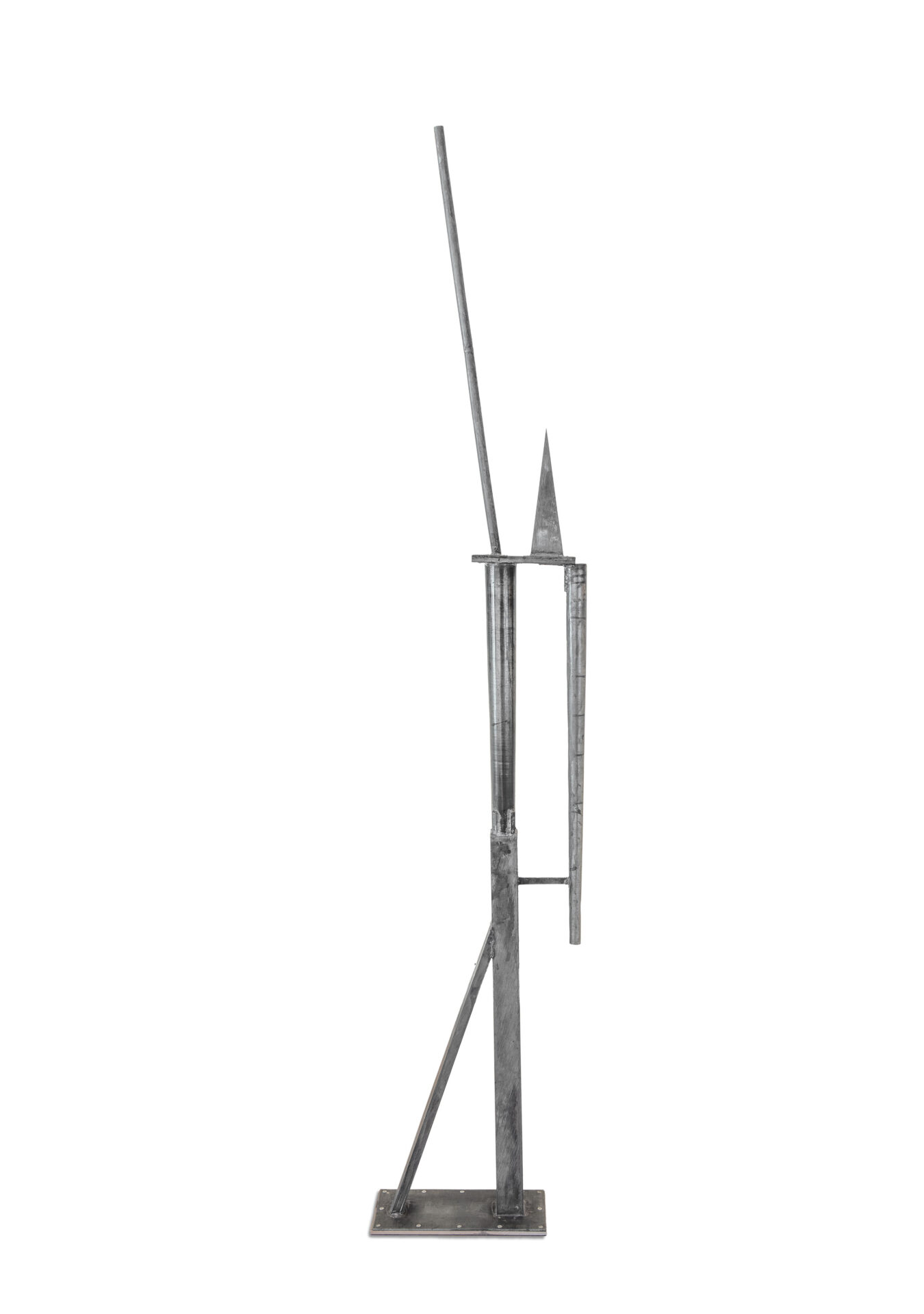The work of Miquel Navarro, an artist closely linked to his native soil of Mislata (Valencia), draws on a landscape characterised by an environment both rural and industrial, with influences ranging from the insects he found as a child in the irrigation channels to the factory towers that populated this area close to the city of Valencia.
Though better known for his sculptures, Navarro began in the art world in 1964 as a painter, especially on paper. In 1968, he abandoned his studies at the San Carlos Advanced School of Fine Arts in Valencia and in 1973 he exhibited his first city at the Galería Val i 30, also in Valencia. With these cities, Navarro brings sculpture to horizontality, as they are made up of countless elements laid out across the floor evoking houses, buildings, towers, factories, and so on: all the elements we can find in a city. These pieces were created at first in clay, a material very closely linked to his homeland, although later he used metals such as zinc, iron or aluminium.
Sensuality and eroticism also play a very prominent part in his work, which is full of phallic elements and naked figures. It is a sexuality that can be a source of both pleasure and suffering. As the artist himself explains: “Eroticism is a very important part of my work. On the one hand, it is represented by the totem pole, which is not only a human, phallic element, but a symbol of solitude and power, as is the case with skyscrapers.”1
Navarro was selected in 1980 for the Images from Spain exhibition which was held at the Guggenheim in New York and subsequently travelled to other museums in the United States. In 1986 he took part in the Venice Biennale, representing Spain with the artists Ferran García Sevilla, José María Sicilia and Cristina Iglesias.
Valencia, Castellón, Brussels, Barcelona, Vitoria and Zaragoza, among other cities, have public sculptures by Miquel Navarro. This is one of the areas that he has worked on most assiduously and for which he has achieved great recognition, as many of these sculptures have become symbols of the cities in question. His work is also found in the collections of institutions such as the Guggenheim in New York, the Centre Pompidou in Paris, the Colección La Caixa, the IVAM and the Museo Nacional Centro de Arte Reina Sofía in Madrid, among others.
Miquel Navarro has established a foundation, located in Mislata, which bears his name and is devoted to protecting and disseminating his work.
